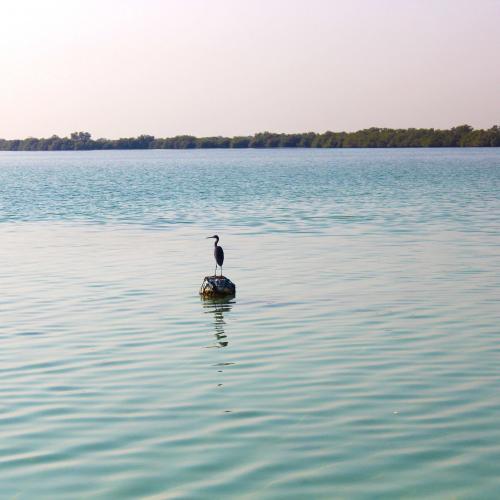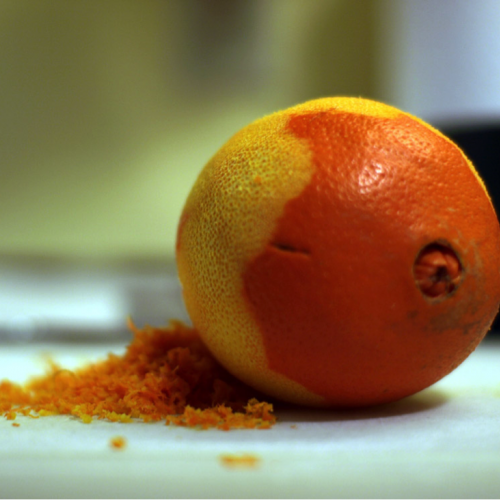Choose only the best *low carbon* ingredients this Ramadan
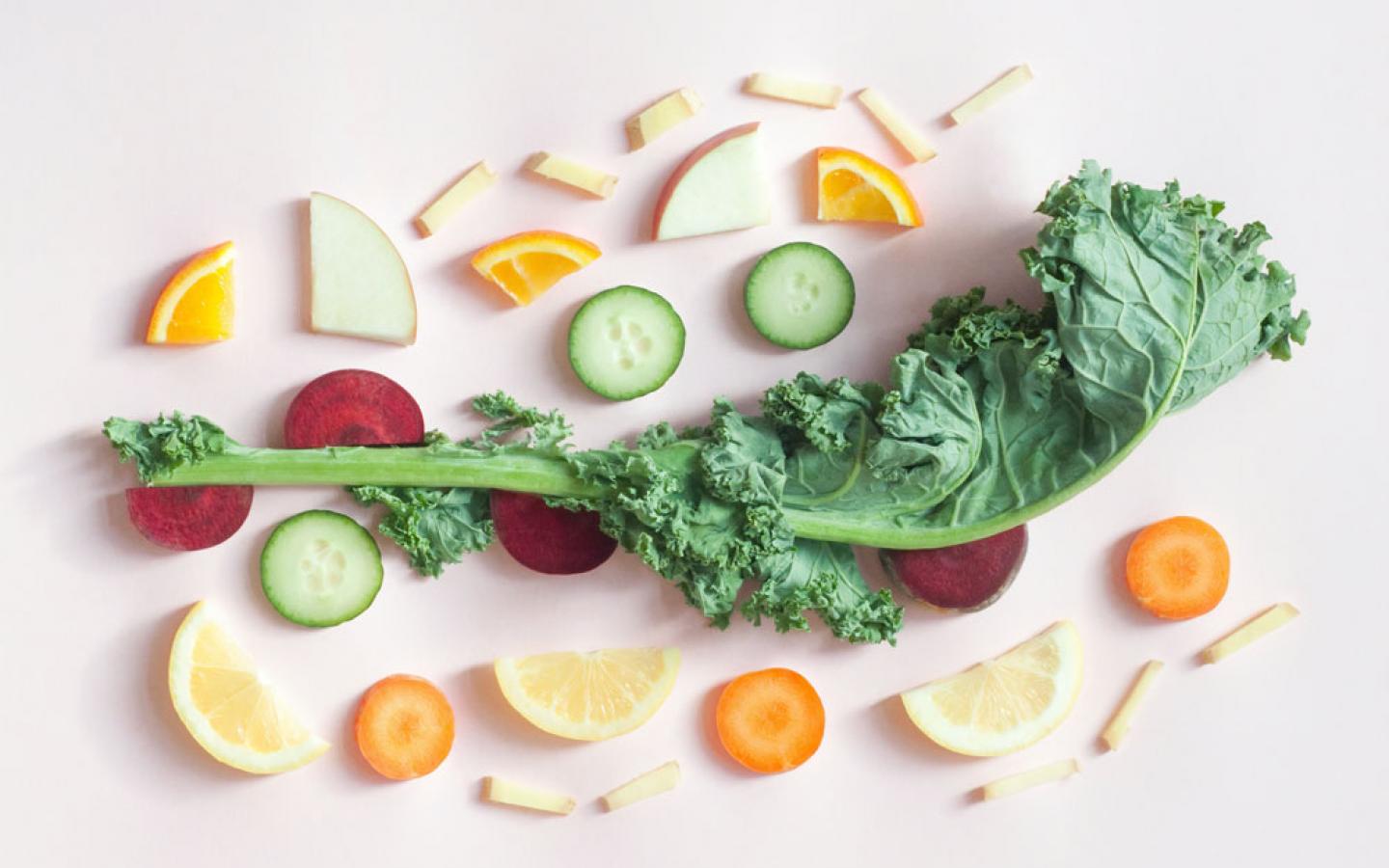
Move over carbs, there’s a new diet in town! This one prioritises local, seasonal, organic and plant-based foods. It’s also easy to follow, especially with this cheat sheet of low carbon ingredients.
What is a ‘low carbon’ diet?
Instead of counting calories in the food, a low carbon diet considers the overall carbon footprint involved in producing, packaging, transporting, storing and preparing the food. Carbon dioxide and other greenhouse gases trap heat in the atmosphere of the planet and are directly responsible for global warming and the negative effects of climate change that we face today.
The calculation of each food’s carbon footprint takes some serious effort, math and science. Luckily, it’s already been completed by organisations such as ours, and the resulting guidelines are quite simple to follow.
Take beef for example.
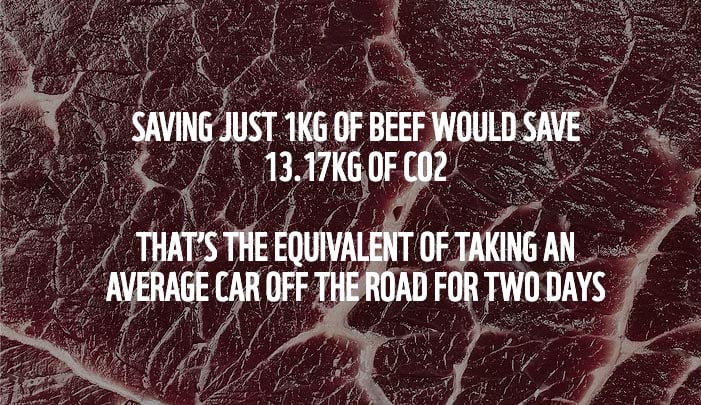
Photo source: saveonethird.org
Or a dish, like chicken tikka

Photo: stuart_spivack on Flickr (Creative Commons - AT-SA). Curious about the math? Refer to Food in a Warming World by WWF UK
Meat isn’t the only offender. While meat does indeed have a higher carbon footprint, we waste a lot of plant-based foods too.
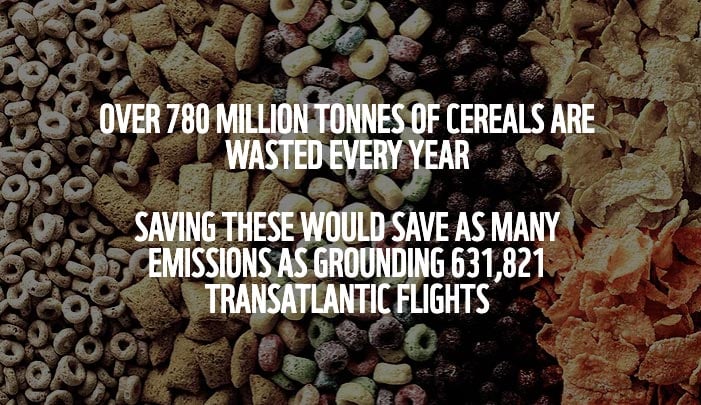
Photo source: saveonethird.org
Having a hard time visualising these wild statistics? Then we’ll leave you with a simple one. By saving 1/3 of your food from going to waste, you will help reduce global greenhouse gas emissions by 8%.
Join the movement to Save 1/3 here, and
scroll down to find out how you can embrace a low carbon diet.
Change the way you buy groceries
Here are 5 ways to adopt a sustainable mind set while shopping, and why they are so important.
- Buy locally produced foods from organic markets such as:
- Emirates Bio Farm in Al Ain
- Ripe Market in Dubai and Abu Dhabi
- Greenheart Organic Farm Store
- Kibsons
- Quality Food
Most of these offer home delivery across the UAE, resulting in a lower carbon footprint than foods flown in from around the world.
When the summer comes to an end, you can cut down on your carbon footprint even further, by growing your own herbs like thyme, parsley, mint, curry leaves and basil.
- Buy certified organic foods.
That are produced without the use of harmful pesticides and fertilizers. Apart from being bad for our health, conventional fertilizers emit nitrous oxide - a greenhouse gas that has a global warming potential 300 times larger than that of carbon dioxide.
Organic farming also results in healthy soil that is better able to absorb carbon from the atmosphere. You can learn more about carbon sequestering here.
Concerned about the cost of buying organic foods? Try to choose organic when it comes to foods that are produced with a high amount of pesticides (see the “Dirty 12” list below), and stick to the ‘normal’ section for foods that require lower pesticides (see the “Clean 15” list below).
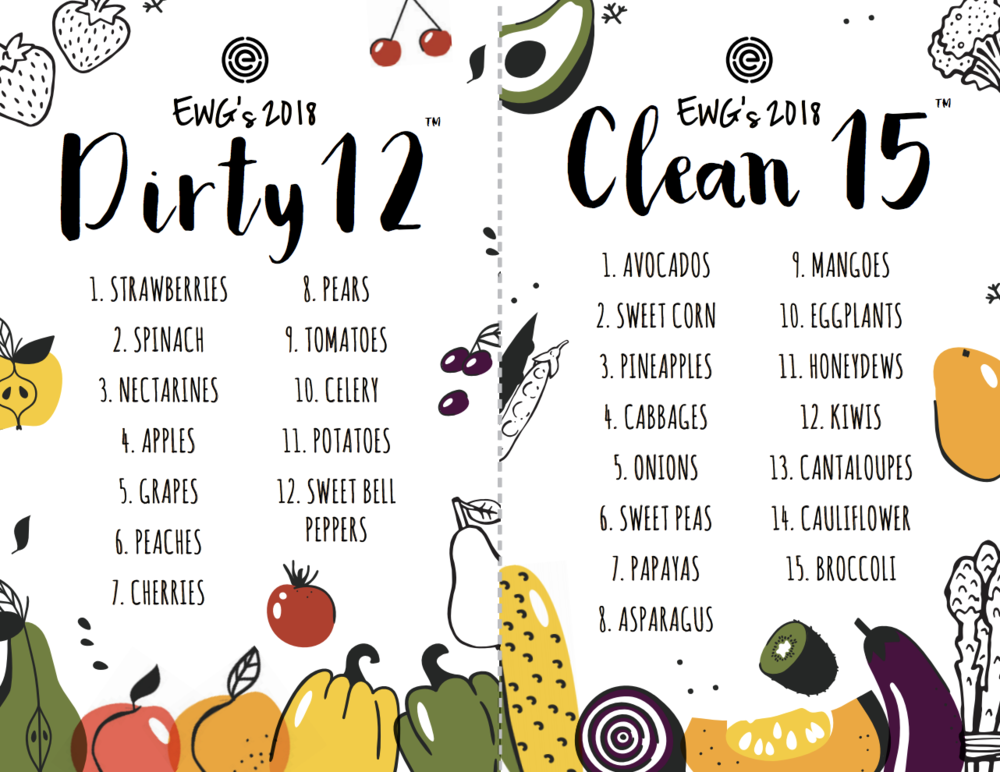
Source: Environmental Working Group
- Choose fresh over frozen.
Fresh foods have a lower carbon footprint as they do not need to be stored at very low temperatures for long periods of time.
- Choose plant-based foods over meats and hard cheeses.
Cows and sheep produce (or rather ‘burp’ out) the greenhouse gas methane, which is far more potent than carbon dioxide. Hard cheese has a high footprint because it is produced using a large amount of milk, and has to be stored at low temperatures. Instead, increase the amount of veggies, fruits, cereals, grains and pulses you eat and try to reduce your consumption of meat, hard cheese and even dairy, by at least one-third.
- Avoid or reduce processed and packaged foods,
especially ones that are wrapped in multiple layers of plastic.
Add these 10 low carbon foods to your diet
Below is our pick of 10 low carbon foods that you can indulge in guilt-free this Ramadan, and throughout the rest of the year too. These foods are featured in the Future 50 Foods report by WWF UK, and chosen because they are environmentally friendly and high in nutrients.

Photo by Denise Johnson on Unsplash
- Chickpeas. The source of all things hummus, chickpeas are rich in protein and a great substitute for meats.
- Sesame seeds. Enjoy them in your tahini and halva!
- Lentils. Lentils have a carbon footprint that is 43 times lower than beef.
- Mung Beans. The plants are natural nitrogen-fixers; so let’s do our part in increasing the demand for mung beans! Use them in dals, rice dishes, stir-fries…and even frozen posicles.
- Quinoa. Quinoa is popular as a rice-substitute – try making a quinoa biryani for Iftar in the next few days!
- Okra (or ‘lady finger’). Enjoy it as a stir-fry or a stew, or be adventurous and try it in a Creole or Cajun style preparation.
- Kale. Kale is quite easy to find locally in organic markets. You can even grow your own kale here in the UAE (read a local gardener’s account here).
- Red cabbage. Brighten up your salads at iftar with some low carbon red cabbage.
- Spinach is another leafy green that is grown locally.
- Walnuts. Not to be confused with almonds grown in drought stricken California, half of the world’s walnuts are actually produced in China.
These low carbon foods are easy to find, and are probably a part of your kitchen pantry already. Add one to your Iftar menu for the night, and share a photo of your dish on Instagram with #YallaGreen #SaveOneThird and tag @ews-wwf.
